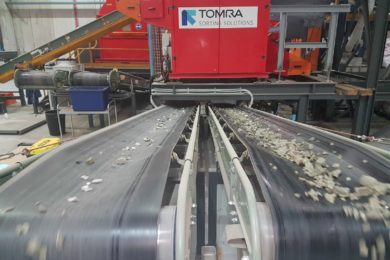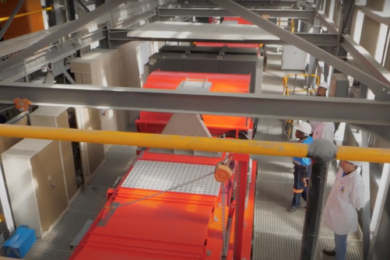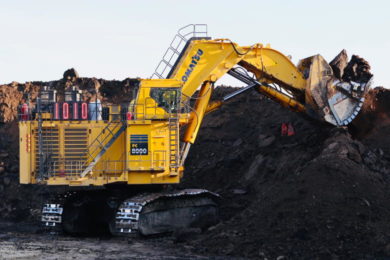The stage two ore sorting campaign on drill core from Middle Island Resources’ Two Mile Hill tonalite gold deposit in Western Australia has confirmed the technology’s potential to improve gold grades and cut waste processing.
Two Mile Hill, part of the wider Sandstone gold project, comprises a “ubiquitously gold mineralised, tonalite (granite) plug or stock”. At surface, the deposit measures some 250 m in length, 80-90 m width and extends to at least 700 m depth. It is some 4km north of the company’s 600,000 tonne per year Sandstone processing plant.
Middle Island has been looking for ways to improve the economics of mining the deposit through the use of ore sorting technology. This followed recognition that more than 96% of the gold at Two Mile hill was hosted by quartz veins within the tonalite. The deposit hosts 391,000 ounces of gold inferred resources grading 1.35 grams per tonne, according to a 2004 JORC study.
Stage one trials, using X-ray and optical sensors, indicated sorting could deliver a 185-257% increase in feed grade, with gold recoveries in excess of 93%. Up to 64% of the sorter feed material could be rejected, delivering significant economic benefits.
While stage one focused on the concept of selective underground mining with open stoping – therefore, using diamond core intervals with a higher head grade – the latest trials envisaged sub-level caving and took into account core that was representative of the entire sample.
A series of four primary (fresh) composites and a single transitional (partially oxidised) composite comprising intervals of half HQ and half PQ diamond core from hole MSDD261 were selected for crushing prior to ore sorting.
The results from stage two trials, which involved initial sighter and scoping tests at both Steinert in Perth and TOMRA in Sydney before moving onto the latter’s commercial scale sorting equipment and a combination of colour and X-ray sensors, were “broadly in line with the earlier scoping trials”, Middle Island said.
Sorting of the primary composites (A, B and C) resulted in upgrades to the sorted concentrate in the range of 155-213%, with the majority of gold selected by way of colour differentiation. Sorting recoveries for primary composites ranged from 67-93%, while sorting yields (percentage of feed reporting to product) ranged from 39-51%.
Middle Island said: “Recoveries and yields are variable, and somewhat lower than demonstrated in the preliminary work, in part due to the higher proportion of fines generates by crushing the larger diameter core and in part by weaker oxidation and associated iron-staining in material comprising Primary Composite A.”
These results are a precursor to an updated resource estimate for the upper half of the 0.9-1.5 million ounce exploration target at Two Mile Hill and an underground mining study.
The company thinks further work is needed to ascertain the factors that give rise to the variance in recoveries between the samples, with stage three ore sorting testwork likely focusing on these aspects and anticipated enhancements using TOMRA’s recently commissioned, commercial-scale, laser sorting unit.










